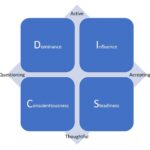Those who know me know that in addition to talking business, I love history and often am critical of our federal government. I always wonder how they got there when I see what I consider to be stupid decisions.
During a recent discussion about what I perceived as a government misstep, the conversation segued into why democratic societies outperform societies based on dictatorship or communism. Eventually, the chat evolved into why small businesses are responsible for more new business ideas than large corporations. As the dialogue continued, I began to draw a connection between an organization’s size and its ability to make good decisions. I believe that the crux of bad decisions is the result of fragmented knowledge and a lack of direct feedback, which becomes more prevalent as the business grows. I’d like to share what led to my conclusion to see if you agree.
In recent years, societal decision-making dynamics have experienced significant shifts, moving away from individuals, families, and voluntary associations toward government institutions. This transformation has had implications on knowledge dissemination and decision-making, with a gradual loss of direct feedback as the government agency grows. Moreover, the fact that decisions are no longer made by elected officials but by insulated government institutions, such as courts or government agencies, also raises concerns about the distortion and inefficiency of knowledge in the absence of direct feedback. While this trend is most visible in the public sector, it also exists in the private sector as corporations grow, underscoring the value of small businesses receiving direct feedback and why we need to support this sector.
Related post: Are Large Corporations Past Their Prime?
The Disconnect: Fragmented Knowledge and Direct Feedback
One of the primary consequences of fragmented knowledge is the diminishing presence of direct feedback in decision-making. In small businesses, owners and employees often receive immediate feedback for their efforts and decisions, allowing them to adapt quickly and learn from mistakes. However, in large, hierarchically organized government agencies and corporations, decision-making authority is distributed across different levels, leading to a less direct connection between decisions and their outcomes. This lack of direct feedback inhibits the employees of these organizations from fully comprehending the implications of their decisions, leading to inefficiencies and less-than-ideal results.
Employee Limitations and Risk Mitigation
Being an employee in a large hierarchical organization has its pros and cons, particularly when it comes to employee limitations and risk mitigation. On the positive side, employees enjoy a certain level of stability and predictability in their income, and they often find themselves shielded from the potential risks associated with poor decisions or unfavorable outcomes within lower ranks. However, the higher up an employee is in the organization, the greater the impact a bad decision can have on the company’s financial performance, thereby increasing their risk of termination.
In larger corporations, bad decisions made by senior management can significantly affect the company’s overall financial health, leading to repercussions such as job loss for those responsible. As a result, senior-level managers tend to become more risk-averse, as they value their current lifestyle, and are less willing to jeopardize it due to a misguided decision. This risk aversion causes them to make decisions with a stronger focus on protection rather than innovation and growth.
Related Post: Your Customer is Afraid you’ll Cost him his Job
Conversely, lower-level employees within the organization may find themselves more insulated from the direct impact of their decisions. This insulation can lead to a reduced sense of ownership and personal investment in the decision-making process. Consequently, employees become less motivated to take risks or propose innovative ideas that could lead to progress and growth for the organization. The absence of direct rewards for effort and good decisions further hampers employees’ willingness to take the initiative, hindering the organization’s ability to fully harness its employees’ full potential.
From Individual to Institutional Decision-Making
Throughout history, business decision-making has been primarily concentrated within individual or family-owned enterprises, creating a strong culture of personal accountability and responsibility for results. However, as businesses expanded and became more intricate, decision-making underwent a transformation, shifting towards institutional structures. This shift led to decentralization and a disconnection from the front lines of operations. Large corporations, in particular, have adopted hierarchical structures that emphasize process and efficiency over immediate outcomes. Unfortunately, this emphasis on process often leads to bureaucratic inertia, where institutions persist in following outdated practices, even when they are no longer effective or relevant to current challenges.
Similarly, government decision-making has experienced a shift away from elected officials and towards more insulated institutions. This trend contributes to focusing on processes rather than outcomes. An example of this phenomenon is the US Postal Service, which has faced challenges to adapt to changing technologies and consumer demands. As a government institution, it operates within a framework that may not easily accommodate the flexibility required to innovate and evolve, resulting in a lag in response to market dynamics.
Conclusion
The shift towards fragmented knowledge and centralized decision-making has indeed had a profound effect on businesses and government institutions alike. The diminishing direct feedback in large entities frequently leads to distorted knowledge and inefficiencies, limiting their ability to fully harness the potential of their employees or constituents.
In contrast, small businesses thrive in an environment where direct feedback is readily available. The closer connection between decision-makers and the front lines allows for quicker adaptation and learning from mistakes. This agility and responsiveness enable small businesses to innovate and implement changes more effectively than their larger counterparts. With a deep sense of accountability and ownership, small businesses can take calculated risks and experiment with new ideas, ultimately leading to better innovations and solutions.
The lesson to take away from this for small businesses is the importance of maintaining a culture that values direct feedback and encourages open communication. Small businesses can harness their team’s collective intelligence by fostering an environment where employees feel empowered to contribute ideas, express concerns, and receive direct feedback on their efforts. This active feedback loop allows for faster iterations, continuous improvement, and greater innovation.
In conclusion, fragmented knowledge, with its lack of direct feedback, can present a notable challenge for large entities, including governments and large corporations, in the realm of decision-making. On the other hand, small businesses benefit from their closer ties to decision-makers and feedback channels, which gives them a valuable edge in making better-informed choices. Embracing direct feedback and cultivating a culture that prioritizes communication and accountability allows small businesses to enhance their decision-making process, enabling them to navigate a dynamic and ever-changing world more effectively. By tapping into the power of direct feedback, small businesses can optimize their operations, improve problem-solving capabilities, and ultimately increase their chances of achieving long-term success.
How can you reduce the effects of fragmented knowledge to improve decision-making?












